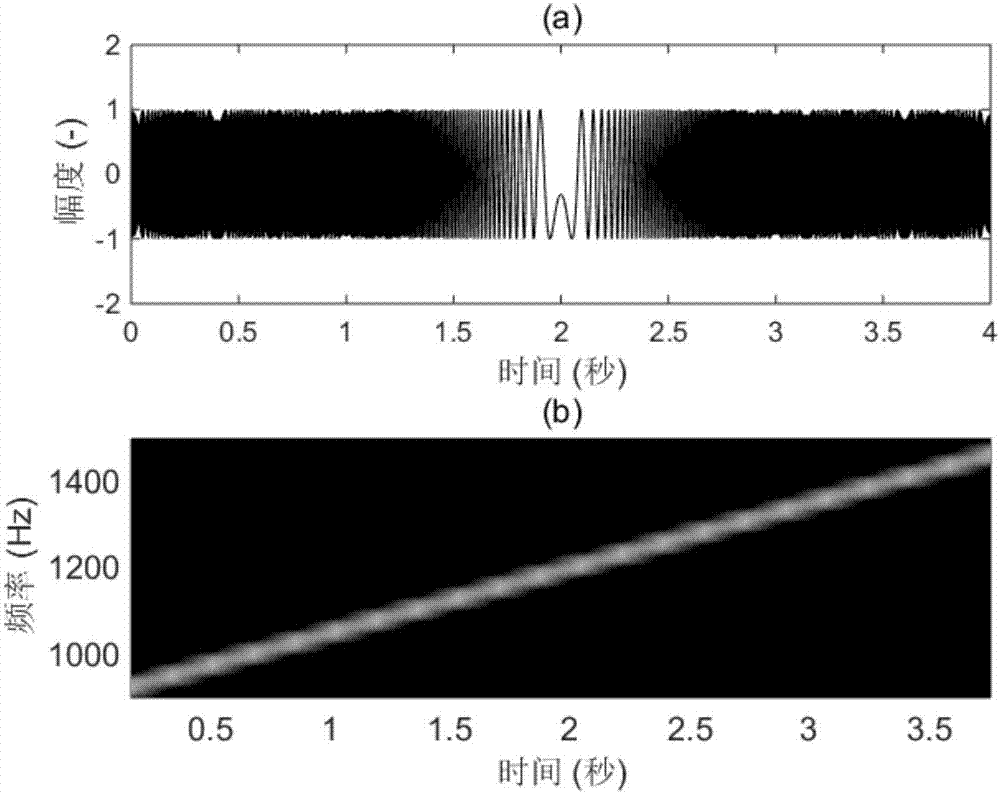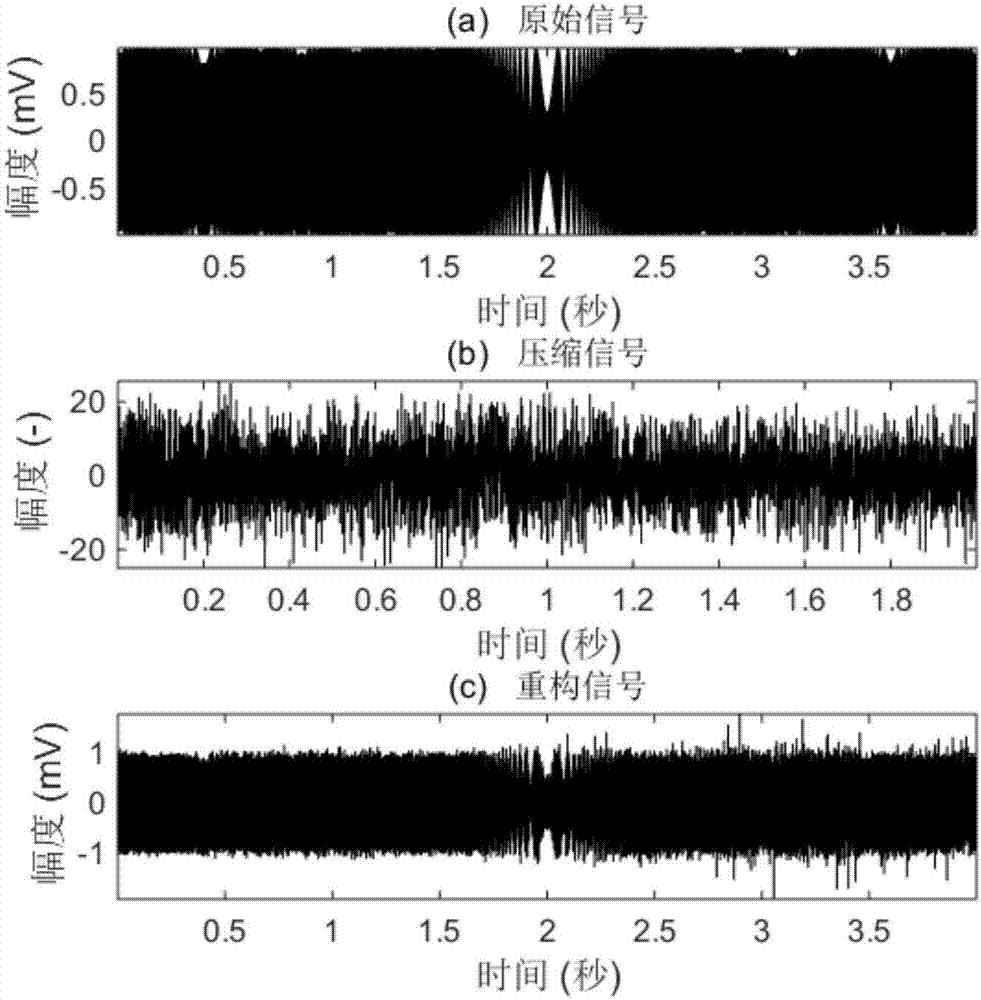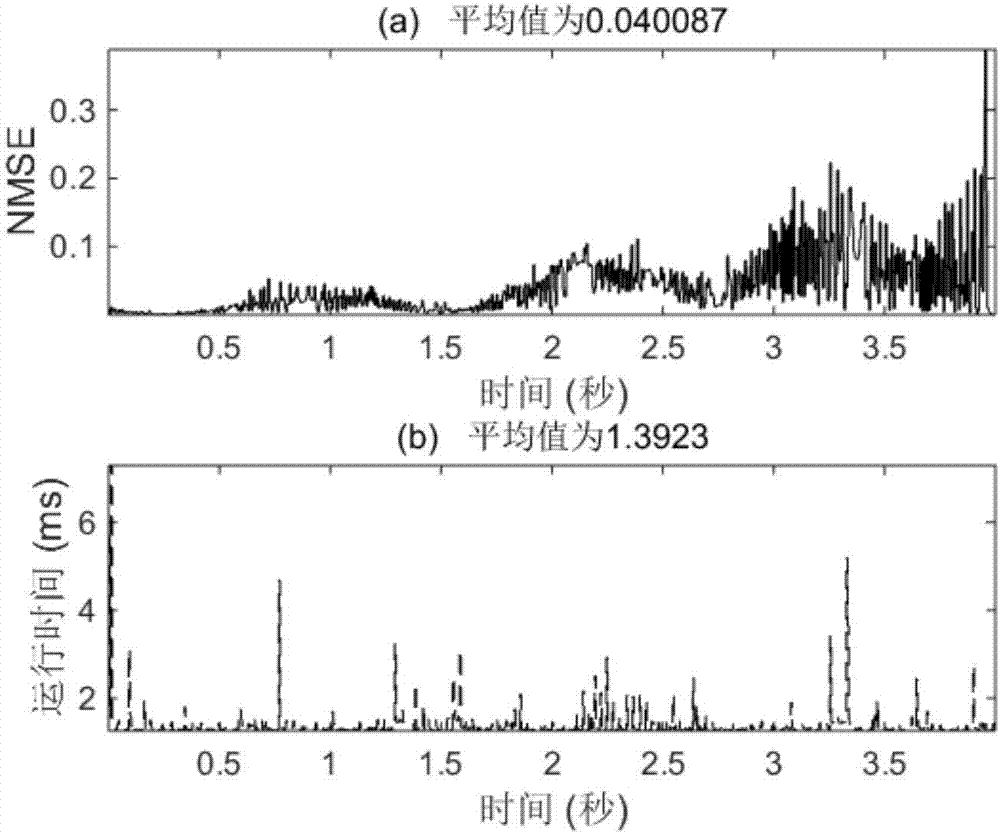Low energy consumption underwater acoustic data compression and reconstruction method
A technology of data compression and low energy consumption, which is applied in the fields of underwater acoustics and underwater acoustic signal processing, can solve the problems of low restoration accuracy and high energy consumption of underwater acoustic data compression, and achieves less requirements for underwater acoustic environment parameters, low energy consumption and low energy consumption. Compression and recovery, optimizing the effect of iterative calculations
- Summary
- Abstract
- Description
- Claims
- Application Information
AI Technical Summary
Problems solved by technology
Method used
Image
Examples
specific Embodiment
[0060] The present invention will be further described now in conjunction with accompanying drawing. refer to figure 1 , using a linear frequency modulated signal (Linear Frequency Modulated, LFM, also known as frequency sweep) as the transmission signal. The specific expression is:
[0061]
[0062] where r represents the frequency modulation rate, and the instantaneous frequency f(t) of x(t) at time t is f c +rt, the bandwidth of the signal can be expressed as B=rT. The parameters are set as follows: signal length is 4sec, center frequency f c = 1.2kHz, bandwidth B = 0.6kHz, sampling rate f s = 24kHz. From figure 1 It can be seen that the frequency sweep signal exhibits non-sparse characteristics in both the time domain and the frequency domain, so the existing compressive sensing algorithm cannot be directly used for compression and recovery.
[0063] In order to evaluate the performance of the algorithm, the compression ratio (Compression ratio, CR) is used, which...
PUM
 Login to View More
Login to View More Abstract
Description
Claims
Application Information
 Login to View More
Login to View More - R&D
- Intellectual Property
- Life Sciences
- Materials
- Tech Scout
- Unparalleled Data Quality
- Higher Quality Content
- 60% Fewer Hallucinations
Browse by: Latest US Patents, China's latest patents, Technical Efficacy Thesaurus, Application Domain, Technology Topic, Popular Technical Reports.
© 2025 PatSnap. All rights reserved.Legal|Privacy policy|Modern Slavery Act Transparency Statement|Sitemap|About US| Contact US: help@patsnap.com



